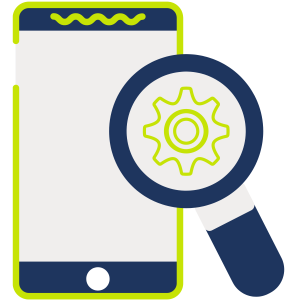
Focus Area 3: Communications
Introduction

Everything you say and do communicates something, all the time, whether you mean it to or not.
Just let that sink in for a minute: EVERYTHING you say and do communicates something, all the time. Communication is so crucial!
And everyone who is paying attention to what you say and do is trying to make meaning from what they hear you say and see you do.
The way we make meaning is that we filter information through our own various cultural lenses; our education, our experience, our background, our preferences, biases, values, and beliefs, to name just a few. And those filters are always at work, whether we are aware and conscious of them or whether they are running on auto-pilot at a subconscious level.
And that, in a nutshell, is exactly what makes human communication uniquely challenging. Even if we speak the same language, we don’t all filter information in exactly the same way. So, getting what someone really means when they’re communicating with us can actually be a bit challenging.
There is a simple strategy you can learn to make communicating less challenging, no matter what situation you’re in or who you’re communicating with. It’s about owning the responsibility to ensure that what you mean to communicate is exactly what the person you are communicating with receives.
Did that idea just make your head spin a little bit?
Most of us have come to think that the responsibility for understanding what we communicate rests with the listener. Think back on times your communication seemed to have been misunderstood. Have you ever replied in frustration, “You’re just not listening” or “You just don’t get it!”
Employing this strategy and style of communication requires you to know three things in any given interaction:
- What you want to convey – the MEANING of your communication
- How you will know that your meaning has been received
- What to do when the meaning of your message misses the mark
Adopting this strategy as a mindset and philosophy for how you will communicate will require lots of repetition and practice, and it will take some time to master. But you’ll discover that you don’t have to rely on typical communication techniques as often. You’ll have greater flexibility. And your communication will always have greater impact.
That said, while you’re learning how to use this strategy, you will also need to know about tried and true techniques that you can fall back on when you need to. This training will cover some of those methods as well.
No doubt you already know how important it is to communicate effectively in your work with youth. But why is it important? There are many answers to that question but the perspective we’re going to focus on is that in your interactions with young people you have one or more goals and effective communication will help you reach those goals.
As a youth worker, there are typically three basic aims that you want to accomplish in your communication while at work:
- To develop good, healthy, productive relationships with young people
- To help young people develop and make positive changes in their lives
- To build good working relationships with co-workers and supervisors
In any situation, it is smart to ask yourself, “How can I communicate and interact in this situation to help move toward the goals?” This question may sound obvious. But asking yourself this question in each situation will help you find the communication tool that best matches the situation.
Youth workers communicate with young people in groups and on an individual basis in one-on-one situations. There is considerable overlap in how we communicate in one-on-one situations or in a group. However, groups have unique attributes that we need to recognize and incorporate in our communications if we are to achieve the three goals identified above.
Your goal for this learning module is to expand your thinking about communication and try out some new communication tools for your toolbox. With these tools, you can build the foundation for strong, trusting relationships with young people.
This is a starting point and with practice you will become comfortable in matching your communication strategy with the goals of the specific situation you find yourself in.
Learning Tip

Every single area of your life and work is impacted by your ability to communicate effectively. Communication is the heartbeat of human interaction. And the more effective you become with all the communication tools available to you, the better the results you’ll see for yourself and the young people you serve.
Take a moment to get these learning objectives set in your mind. When you know what you’re looking for in terms of the key learning, it’s easier to pay attention to those factors along the way.
As a best practice, it’s also a good idea to pause at the end of each section and reflect back on what you’ve just learned. Draw to mind all the elements you can recall that reinforce your learning objectives.
You’ll be well-prepared for the quiz at the end of this module by making sure you’re taking in the key lessons outlined in these learning objectives.
Learning Objectives Preview

- Review the fundamental elements of effective communication
- Learn how to use various communication strategies and techniques for certain situations
- Improve your conflict resolution skills
- Learn the Collaborative Problem Solving (CPS) approach
- Gain group facilitation strategies and skills
If you prefer to print this section of The Art & Science of Youth Work certificate course, click on the "Print Friendly" icon to select how you would like it to print. You can remove images and icons.
